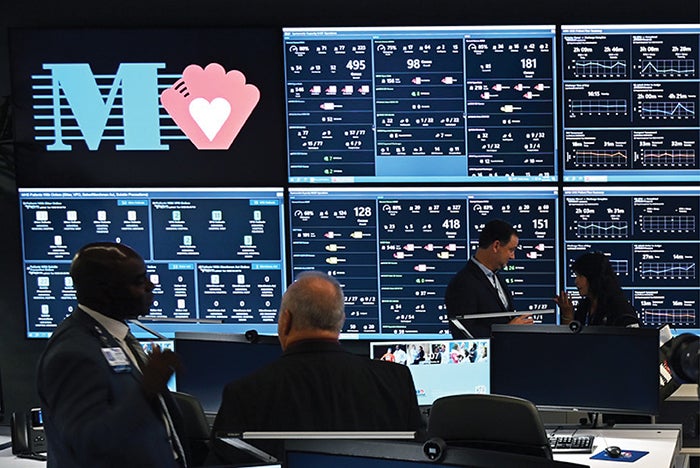AI boosts hospital’s care coordination, reduces fall risks

Memorial Healthcare staff leverage artificial intelligence to improve patient outcomes and staff workflow.
Image courtesy of Memorial Healthcare
Hollywood, Fla.-based Memorial Healthcare System’s recently opened Care Coordination Center (CCC) in nearby Pembroke Pines is a dynamic facility focused on optimizing care delivery across its six hospitals.
At the $1.7 million, 3,000-square-foot CCC, staff facilitate interfacility transfers, manage bed capacity and update virtual care models and staffing needs in real time.
“Epic, our electronic health record is really at the center of it all,” says Jeff Sturman, Memorial’s senior vice president and chief digital information officer. “It works in combination with Artsight’s artificial intelligence (AI) technology to build a virtual nursing platform that leverages the AI and camera-based technology.”
Two-way communication capabilities and predictive analytics also will improve outcomes and streamline processes. A centralized resource for all staffing needs promises to improve overall management of the facility by fostering collaboration across departments and assigning care staff based on acuity and need.
“Nurses working in patient rooms can now operate at a much higher level of complexity,” Sturman says. “They’re not dealing with as many administrative functions because a virtual nurse handles clinical documentation.”
Patient safety is elevated through AI that tracks patient movements and issues automated warnings to alert a virtual nurse or a nurse on the floor when there is a risk of potential harm. Dedicated teams assigned to adult patient rooms use advanced technology to virtually monitor patients at high risk for falls, ensuring immediate intervention and significantly reducing incidents.
The centralized capacity management coordinates people, technology and standardized processes. Early results are promising, with significant reductions in falls and projected cost savings of $1.6 million in one year. “Ultimately, it’s about enhancing the experience for patients, their families and our clinical staff,” Sturman says. “We want technology to support, not overshadow, the human connection in care delivery.”




